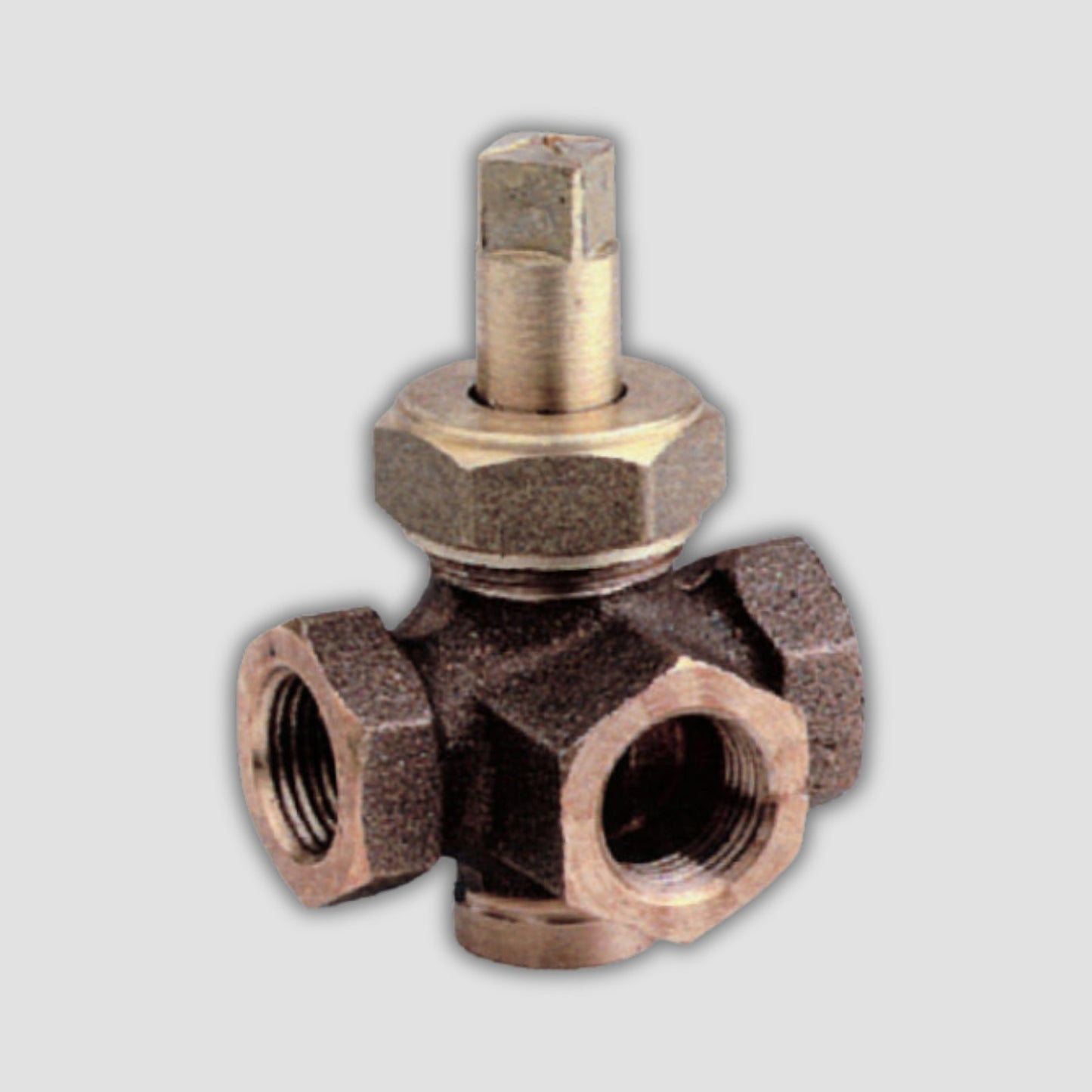Bronze Valves
Bronze 3-Way Plug Cock with Gland
Bronze 3-Way Plug Cock with Gland
Couldn't load pickup availability
The Bronze Plug Cock with Gland – 3 Way is designed for directional flow control in multi-line systems. Featuring a rotating plug with three ports, this valve allows for smooth diversion or mixing of fluids, making it ideal for systems requiring switching between different flow paths. The gland-packed stem ensures a secure, leak-resistant seal during operation.
Constructed from high-quality bronze, this 3-way plug cock is corrosion-resistant and built for long-term use in water, oil, air, and other non-aggressive fluid applications. It’s a compact and reliable solution for industrial, marine, and plant room systems where flexible flow control is essential.
Key Features:
- 3-way flow control for diverting or mixing applications
- Gland seal for secure, leak-tight operation
- Durable bronze body for corrosion resistance
- Simple quarter-turn plug operation
- Suitable for water, oil, air, and general-purpose fluids
- Ideal for marine, HVAC, and industrial use
Share

FAQ's
What is the difference between a valve and an actuator?
What types of actuators are available?
The main types of actuators are:
Pneumatic actuators – use compressed air for fast, reliable operation.
Electric actuators – use electrical power for precise control.
Hydraulic actuators – use fluid pressure for high-torque applications.
Each type offers unique advantages depending on the environment, media, and system control needs.
How do I choose the right actuator for my valve?
To select the correct actuator, consider:
Valve type and torque requirement
Power source available (air, electric, or hydraulic)
Operating environment (temperature, humidity, hazardous area)
Control signal type (on/off or modulating)
Matching actuator torque and compatibility with the valve’s ISO mounting ensures reliable performance.
What are the main types of valves used in automation?
The most common valves in automated systems include:
Ball valves – for tight shutoff and quick operation.
Butterfly valves – for larger flow control with compact design.
Globe valves – for precise throttling and flow regulation.
Check valves – to prevent backflow.
Gate valves – for full bore flow isolation.
What’s the difference between a double-acting and spring-return actuator?
Double-acting actuators use air (or power) to both open and close the valve.
Spring-return actuators use air to open (or close) the valve, and a built-in spring to automatically return it to a safe position when power or air is lost — ideal for fail-safe operation.
How often should valves and actuators be serviced?
Regular maintenance intervals depend on operating conditions, but a good rule of thumb is to inspect every 6–12 months.
This includes checking for leaks, lubrication, seal wear, and actuator responsiveness to prevent unexpected downtime.

